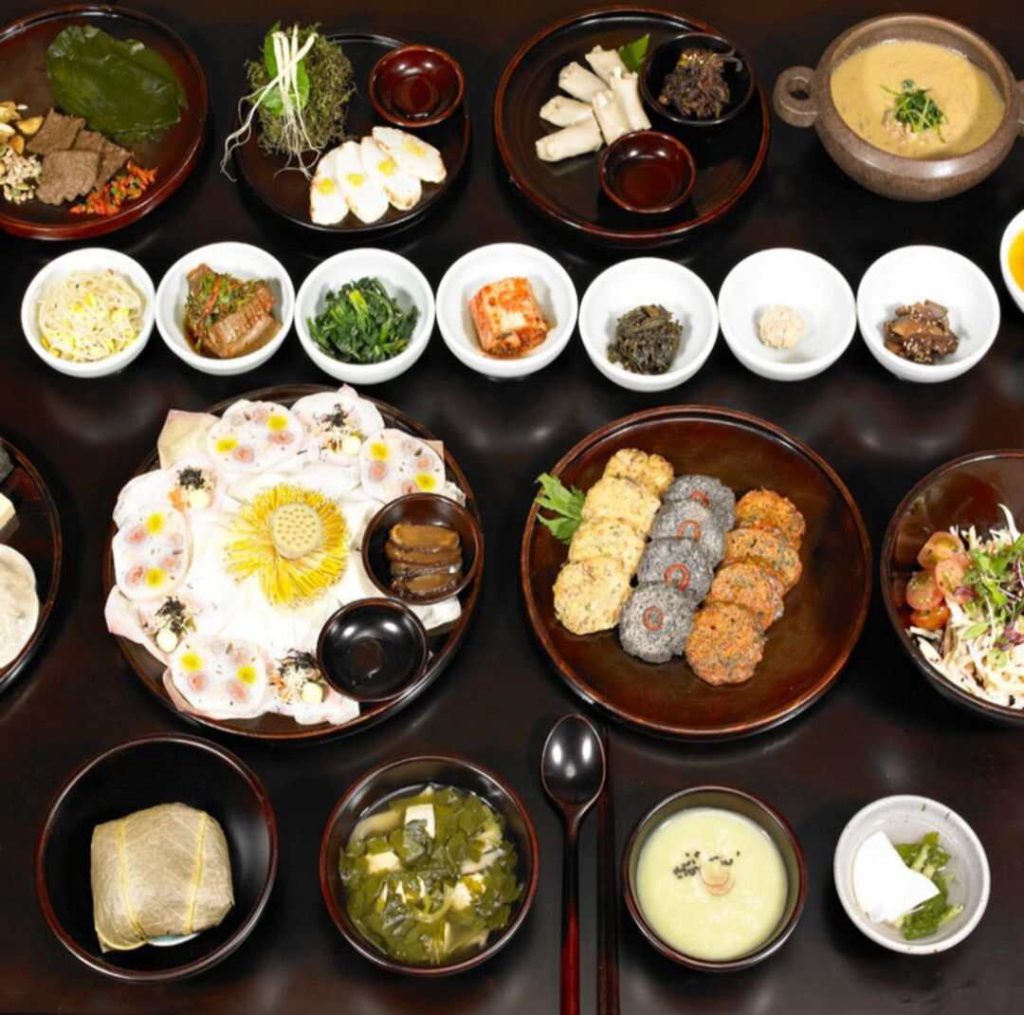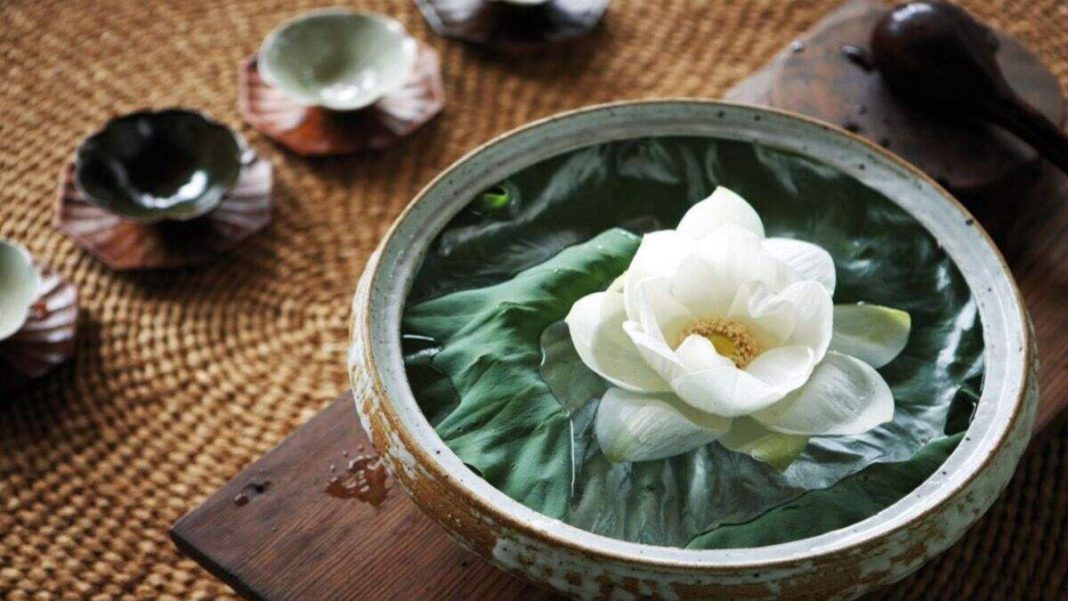SOUTH KOREA: In the bustling world of modern cuisine, where convenience often takes precedence over sustainability, the concept of “zero waste” has gained considerable attention. Korean temple cuisine, also known as “sunsik” or “barugongyang,” is a remarkable culinary tradition deeply rooted in Buddhist principles and practices.
With a history spanning over 1,700 years, this ancient ‘zero waste’ cuisine not only satisfies the taste buds but also upholds the values of sustainability, mindfulness, and harmony with nature. Temple cuisine embraces the concept of “zero waste” by utilising every part of the ingredients and transforming them into exquisite and healthy dishes.
In a world grappling with the environmental challenges of excessive food waste and unsustainable practices, Korean temple cuisine serves as a timeless example of how harmonious coexistence with nature can be achieved through mindful cooking and consumption. Let us delve into the world of Korean temple cuisine and explore its rich legacy.
Origins of Korean Temple Cuisine: A culinary philosophy rooted in Buddhism
Korean temple cuisine traces its origins back to the introduction of Buddhism to the Korean Peninsula in the 4th century. As Buddhism flourished, temples emerged as centres for spiritual practice, meditation, and education. As Buddhist teachings gained popularity in Korea, monastic communities, known as “seonwon,” were established.
These communities aimed to cultivate spiritual enlightenment while embracing a life of self-sufficiency, simplicity, and non-violence. Alongside these pursuits, the monks developed a cuisine that aligned with Buddhist teachings, emphasising harmony, mindfulness, and respect for all living beings. Temple cuisine became an integral part of this lifestyle, focusing on using locally sourced ingredients and minimising waste.
The underlying philosophy of Korean Temple Cuisine revolves around the concept of ‘ahimsa,’ or non-violence, which extends to food choices. It emphasises the use of seasonal, plant-based ingredients procured in a sustainable manner. As a result, the cuisine is entirely vegetarian and free from any animal by-products.
The commitment to non-violence extends to the sourcing of ingredients, encouraging the use of seasonal and organic produce that is cultivated with care and respect for the environment. The preparation of each dish is approached with gratitude and respect, as the food is considered a gift from nature.
Core Principles of Temple Cuisine:
The Tenet of ‘Jayeon Sikdang”: Nature as the source
At the heart of Korean temple cuisine lies the principle of ‘Jayeon Sikdang,’ which translates to “restaurant from nature.” This philosophy recognises nature as the ultimate provider of ingredients and emphasises the utilisation of seasonal and local produce. Monks would often gather wild herbs, mushrooms, and vegetables from the surrounding mountains, highlighting a sustainable and regenerative approach to sourcing food.
Zero Waste Cooking: Honouring every ingredient
In Korean temple cuisine, nothing goes to waste. The concept of ‘zero waste’ lies at the heart of Korean temple cuisine. Every part of an ingredient is valued and utilised, reflecting the philosophy of minimising waste and maximising resourcefulness.

Vegetables are often used whole, including stems, roots, and leaves, to make hearty and wholesome dishes. Even food scraps are creatively repurposed, transforming them into fermented condiments or broths that add depth and flavour to meals. This approach not only minimises environmental impact but also celebrates the value of every ingredient.
Fermentation: Unlocking flavour and nutrients
Fermentation is a key technique employed in Korean temple cuisine, celebrated for its ability to enhance flavour profiles while preserving food for extended periods.
Fermented ingredients like soybean paste (doenjang) and chilli pepper paste (gochujang) are staples in many temple dishes. This ancient preservation method not only reduces food waste but also unlocks the nutritional potential of ingredients, increasing their bioavailability and promoting gut health.
Balancing the Five Elements:
Korean temple cuisine emphasises the balance of the five elements (wood, fire, earth, metal, and water) and the corresponding flavours (bitter, sour, sweet, spicy, and salty).
This balanced approach entails incorporating a variety of colours, tastes, and textures to create visually appealing and nutritionally complete dishes. Additionally, mindful cooking techniques such as steaming, boiling, and lightly stir-frying are employed to retain the natural flavours and nutrients of the ingredients.
Mindful cooking and eating:
Temple cuisine emphasises mindfulness and gratitude throughout the entire food preparation process. Monastic chefs carefully select, clean, and handle ingredients with utmost care and attention, infusing each dish with positive energy and appreciation. Every step of the cooking process is performed mindfully, fostering a deep connection between the cook and the food.
Beyond the preparation of food, Korean temple cuisine emphasises the practice of mindful eating. Before partaking in a meal, individuals are encouraged to reflect on the efforts that went into producing the ingredients, expressing gratitude for the sustenance provided by nature.
Mindful eating cultivates an appreciation for each bite and encourages a slower, more conscious approach to consume food, fostering a deeper connection to the environment and the act of nourishment itself.
Health and Healing:
Korean temple cuisine places a strong emphasis on nourishing the body and mind. The cuisine embraces an abundance of plant-based ingredients, offering a wide array of nutrients, vitamins, and minerals.
By avoiding the excessive use of oil, sugar, and artificial additives, Korean temple cuisine promotes overall well-being and longevity. The harmonious combination of flavours, textures, and colours not only satisfies the palate but also provides a visual feast that is pleasing to the eye.
Cultural significance and modern influence:
Beyond its monastic origins, Korean temple cuisine holds cultural significance for the Korean people. It represents a connection to their heritage and serves as a testament to the rich culinary traditions that have been passed down through generations.
In recent years, temple cuisine has gained popularity not only within South Korea but also internationally. Many modern chefs and food enthusiasts are drawn to its sustainable practices and wholesome flavours.
Enduring legacy:
Korean temple cuisine has survived and thrived for centuries, passing down its culinary traditions from one generation to another. Today, it continues to inspire not only Buddhist practitioners but also individuals seeking a healthier, more sustainable way of life. The cuisine has gained international recognition, with Korean temple food restaurants opening worldwide, offering people a taste of this ancient legacy.
Moreover, temple cuisine has influenced modern Korean culinary practices, encouraging a greater emphasis on locally sourced ingredients and a more conscious approach to food preparation. The principles of mindfulness, balance, and sustainability have found resonance in contemporary society, where the importance of eco-friendly and ethical practices has gained significant traction.
Korean temple cuisine stands as a testament to the wisdom and ingenuity of the past. With its emphasis on sustainability, mindfulness, and harmony with nature, this culinary tradition offers valuable lessons in a world grappling with environmental challenges.
As we rediscover the ancient ‘zero waste’ practises of Korean temple cuisine, we not only savour delicious and nourishing dishes but also embark on a journey towards a more sustainable and mindful way of living. Let’s embrace this 1700-year-old legacy of Korean temple cuisine and carry its lessons into our daily lives, fostering sustainability and reverence for the gifts of nature.
Also Read: Guru Rabindranath Tagore: The Literary Giant and Nobel Laureate Who Shaped Indian Culture



